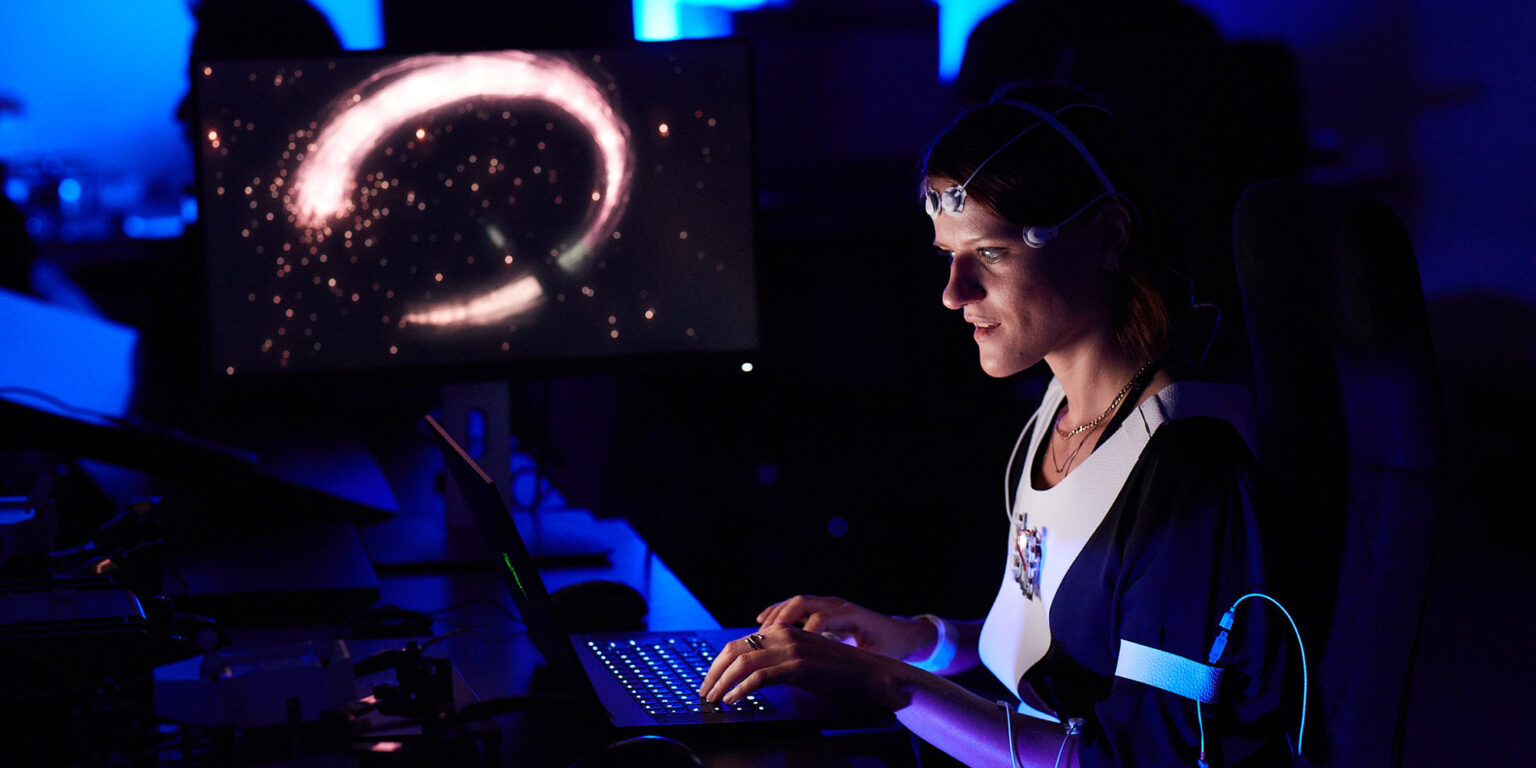Future Ink is a joint research project between Wacom, the world’s leading company for interactive pen displays and tablets, and the Ars Electronica Futurelab.
The project explores the future of creativity using various prototypes of future ink. Since 2020, the team has been searching for answers to the question: When we create and experience art, “Where is my soul?” As a first step, the team developed Space Ink, which envisions a world where we can use tablets and drones to draw in any space – from light painting in the air to painting huge canvases. In 2021, Bio Ink was developed: A living ink with various microorganisms that grows freely beyond human input. With this, we have continued our search for the soul under the term “noise”: When we use digital tools for creativity that filter a lot of data and remove apparent noise, do we lose important information? Can “noise” be art?
In 2022, the team explored the creative spark with Life Ink: can our mind and body create ink? Here, brainwaves and body signals are captured and visualized in real time as a new form of ink that expresses our creativity. The Ars Electronica Futurelab and Wacom will continue to research the concept of a new future ink to support human creativity.

Life Ink
Life Ink explores the inner mechanisms of creativity in our brains and bodies. The research team has developed wearable equipment that captures the creative spark in the human brain and body to produce a new form of ink. This can be displayed on a large scale and in 3D as an immersive experience, visualizing what happens inside the human being during the creative process. Can the human mind and body become a pen that produces ink that expresses our creativity? As part of the research, the project team recorded creative moments of various protagonists, and a live piano performance with pianist Maki Namekawa in Deep Space 8K during the Ars Electronica Festival was a unique experience for the audience.the technology aims to make the invisible visible and break down barriers by offering people new ways to explore and express their creativity.

Bio Ink
At Bio Ink, we combine biotechnology and digital pen tablet technology to create living ink that grows independently of human influence. With this research, we explore co-creation with other organisms and nature. In the BioLab of the Ars Electronica Center, biological ink is produced from various microorganisms. Artists can use this ink to draw and write with a bio-pen on a culture medium plate and tablet called a bio-pad. At the same time, the data from the bio-pen is digitally extracted for creative analysis and use. The artworks are incubated in a controlled environment to allow the living ink to grow. The microscopic organisms are initially invisible, but gradually multiply and form colonies that are visible to the naked eye, transforming into beautiful patterns beyond our input.

Space Ink
Space Ink combines Wacom’s pen and tablet technology with drones controlled by Ars Electronica Futurelab’s SwarmOS to create a future where we can draw in any room with a pen. The first step in Space Ink research is Space Brush. The brushstrokes created by artists on the tablet are translated into three-dimensional movements of the drone. The LEDs on the drone create a light painting that is visualized by the projector in the studio. In the second step, Expressive Brush, we expand the expressive possibilities of artists and drones with additional color and drone parameters that capture the soul of artistic expression and enable mutual inspiration between drone and human. In the third step, Collaborative Brush, we explore the possibility of multiple drones and humans working together as a basis for future creative expression.
You can find out more about Future Ink on the Ars Electronica Futurelab website.
